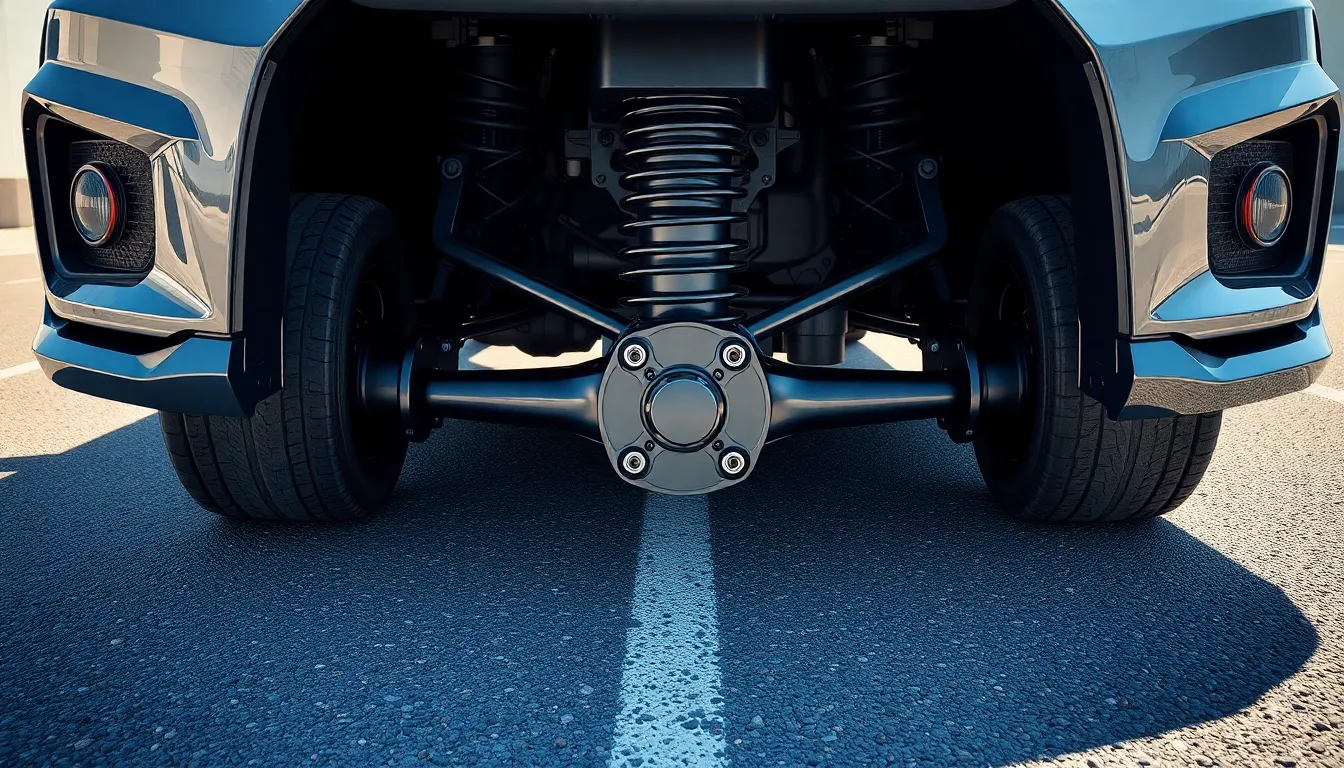When we talk about vehicle handling and steering performance, caster angle plays a crucial role that many drivers don’t fully understand. This fundamental suspension geometry setting directly affects how your car feels on the road, influences steering stability, and impacts tire wear patterns.
Positive caster tilts the steering axis backward from vertical, while negative caster tilts it forward. These seemingly small adjustments create dramatically different driving experiences that we’ll explore in detail.
Whether you’re dealing with a car that wanders on the highway, struggles with straight-line stability, or requires constant steering corrections, understanding caster angles can unlock the mystery behind these handling issues. We’ll break down the key differences between positive and negative caster, their real-industry effects on your vehicle’s performance, and help you determine which setup works best for your driving needs.
What Is Caster Angle and Why Does It Matter?
Caster angle represents the steering axis inclination when viewed from the vehicle’s side, measured in degrees from a vertical line through the wheel hub. This angle determines how your steering wheel behaves and directly impacts vehicle stability during highway driving.
Positive caster occurs when the steering axis tilts backward at the top, creating a trailing wheel effect similar to shopping cart wheels. Most modern vehicles feature positive caster angles ranging from 3 to 7 degrees, with performance cars often running higher values between 6 to 9 degrees for enhanced stability.
Negative caster happens when the steering axis tilts forward at the top, making the contact patch lead the steering axis. Classic cars from the 1960s and earlier commonly used negative caster settings, though modern applications rarely employ this configuration due to stability concerns.
Caster’s primary functions include:
- Directional stability – Higher positive caster creates stronger self-centering forces that keep wheels tracking straight
- Steering feedback – Appropriate caster angles provide drivers with road feel and steering response
- Cornering behavior – Caster affects how quickly steering returns to center after turns
- Tire wear patterns – Incorrect caster settings create uneven tire wear across the tread surface
| Caster Type | Typical Range | Primary Benefit | Common Application |
|---|---|---|---|
| Positive | 3-7 degrees | Enhanced stability | Modern passenger cars |
| High Positive | 6-9 degrees | Maximum stability | Performance vehicles |
| Negative | 0 to -3 degrees | Quick steering response | Vintage racing cars |
Caster angle works through mechanical trail, which is the distance between where the steering axis intersects the ground and the tire’s contact patch center. Greater positive caster increases mechanical trail, creating stronger self-centering forces that improve straight-line tracking but require more steering effort at low speeds.
Racing applications often use adjustable caster settings to fine-tune handling characteristics for exact track conditions. Oval track cars might run different caster angles on left and right sides to optimize cornering performance, while road course vehicles typically maintain equal caster angles for balanced handling in both directions.
Understanding Positive Caster
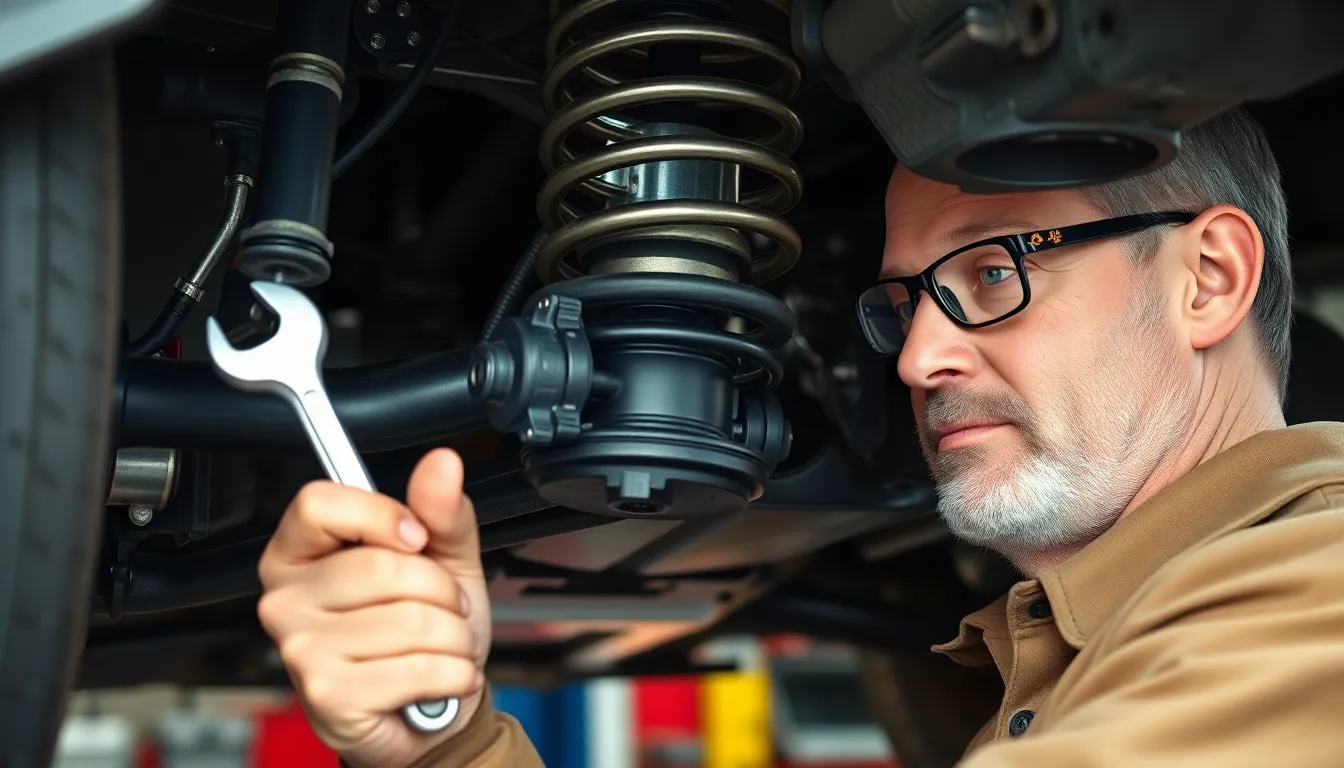
Positive caster creates a geometry where the steering axis tilts backward at the top, positioning the lower ball joint or strut mount behind the upper ball joint. This configuration places the tire’s contact patch ahead of the suspension components, fundamentally changing how your vehicle handles and responds to steering input.
Benefits of Positive Caster
Enhanced straight-line stability represents the most important advantage of positive caster geometry. The backward tilt generates self-aligning torque on the front wheels, automatically returning the steering to center after completing a turn. This natural centering force becomes particularly valuable during highway driving, where maintaining straight-line stability reduces driver fatigue and improves safety.
Superior cornering performance emerges from positive caster’s ability to create beneficial camber changes during turns. The outside wheel gains negative camber while the inside wheel develops positive camber as the vehicle corners. This camber adjustment leans the car into the turn, maximizing tire contact patch area and delivering optimal grip throughout the cornering process.
Effective weight transfer characteristics occur through positive caster’s jacking effect during cornering maneuvers. The front inside wheel rises while the front outside wheel falls, transferring weight to the rear outside wheel. This weight distribution helps rotate the car into turns more effectively, though excessive caster angles can produce unwanted oversteer tendencies.
Drawbacks of Positive Caster
Increased steering effort becomes noticeable as positive caster angles increase beyond moderate settings. Higher caster values require greater input force to turn the wheels, potentially making steering feel heavy without power assistance systems. This characteristic particularly affects low-speed maneuvers like parking and tight cornering situations.
Steering shimmy potential develops when positive caster transmits road shocks more directly to the steering system. These transmitted vibrations can create steering wheel oscillations or shimmy effects, especially when encountering uneven road surfaces or tire imbalances. The increased feedback sensitivity that improves road feel can also amplify unwanted vibrations.
Oversteer risks emerge when positive caster settings become excessive for the vehicle’s design parameters. Extreme positive caster creates pronounced jacking effects that can destabilize the rear of the vehicle during aggressive cornering. This instability manifests as oversteer behavior, potentially reducing overall vehicle control and safety margins in challenging driving conditions.
Understanding Negative Caster
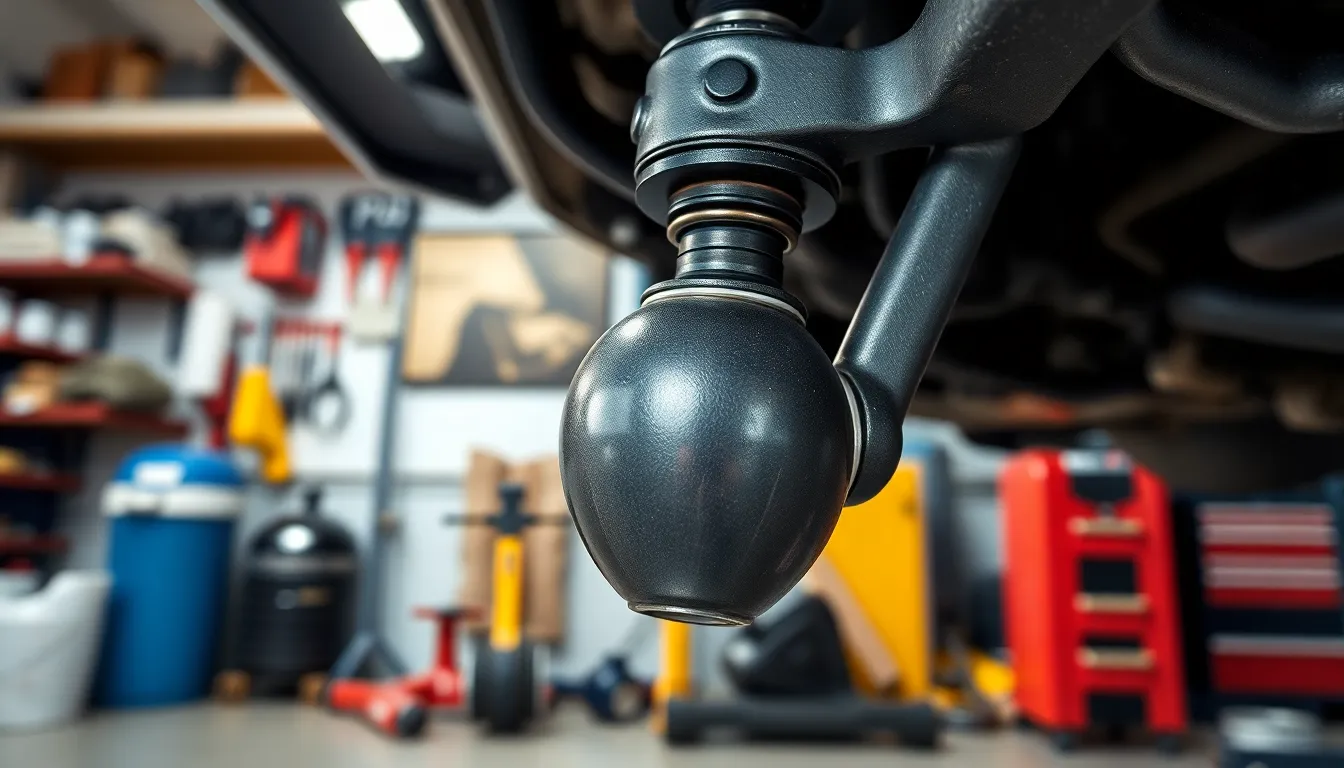
Negative caster occurs when the lower ball joint positions itself behind the upper ball joint, creating a forward tilt at the suspension’s top. This geometry places the tire’s contact patch behind the steering and suspension components, fundamentally different from positive caster’s rearward tilt configuration.
Benefits of Negative Caster
Negative caster delivers exceptionally low steering effort, making wheel turning remarkably easy for drivers. Light steering response characterizes this setup, particularly beneficial in slow-speed maneuvering situations where minimal physical effort becomes essential.
Reduced steering resistance allows drivers to navigate tight spaces and parking scenarios with minimal exertion. Some applications find value in this effortless steering characteristic, especially when precise high-speed handling isn’t the primary concern.
Drawbacks of Negative Caster
Poor directional stability represents negative caster’s most important disadvantage, particularly evident at highway speeds where vehicles tend to wander unpredictably. The absence of self-aligning torque creates unstable straight-line driving conditions that compromise safety and driver confidence.
Braking scenarios worsen negative caster’s stability issues as forward weight transfer increases the negative angle, amplifying directional instability. The lack of self-centering action means steering wheels don’t naturally return to center position after turns, eliminating crucial driver feedback.
Vague steering feel results from this geometry, offering minimal road feedback and reducing overall control precision. These characteristics explain why automotive engineers rarely carry out negative caster in modern vehicle suspensions, reserving its use primarily for shopping carts and other low-speed applications where stability matters less than effortless maneuverability.
Cornering performance suffers as negative caster provides no beneficial camber changes during turns, unlike positive caster’s advantageous outer wheel camber gain that improves tire contact and grip.
Positive Caster vs Negative Caster: Key Differences
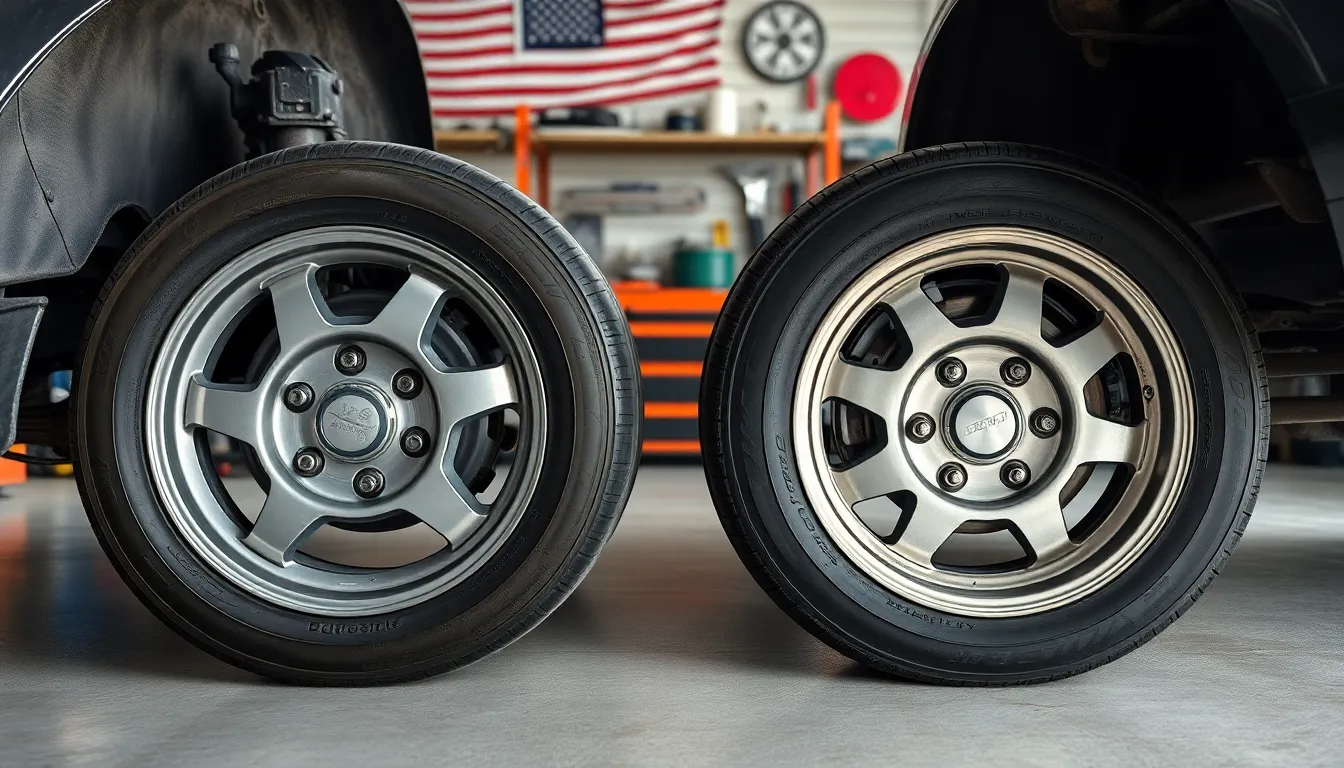
Understanding the practical differences between positive and negative caster becomes essential when diagnosing handling issues or optimizing vehicle performance. These opposing configurations create dramatically different driving experiences across multiple aspects of vehicle behavior.
Steering Feel and Effort
Positive caster generates increased self-aligning torque that makes the steering wheel naturally return to center position after completing turns. This configuration creates a firmer and more stable steering sensation that becomes particularly noticeable at higher speeds, though it requires greater physical effort to turn the wheel in vehicles lacking power steering assistance.
Negative caster reduces the self-centering effect significantly, producing lighter steering effort that requires less driver input during turns. But, this reduction in effort comes with decreased stability that creates a vague or loose steering sensation compared to positive caster setups.
Vehicle Stability at Speed
Positive caster delivers important improvements in straight-line stability during higher speed driving conditions. The geometric setup naturally causes wheels to point straight ahead while providing superior resistance against unwanted wheel movements caused by road irregularities or surface imperfections. Most four-wheel vehicles incorporate positive caster designs specifically for these stability benefits.
Negative caster creates diminished stability characteristics that make maintaining straight-line tracking considerably more challenging at speed. Vehicles with negative caster show increased sensitivity to crosswinds and uneven road surfaces, making the steering feel unpredictable during highway driving conditions.
Tire Wear Patterns
Positive caster typically produces uniform tire wear patterns unless side-to-side imbalances exist within the suspension geometry. Excessive positive caster on one side can cause the vehicle to pull toward the side with less caster, potentially creating uneven wear patterns over extended driving periods.
Negative caster configurations may accelerate tire wear due to increased tire scrub during both straight-line driving and cornering maneuvers. The reduced stability and increased wandering characteristics associated with negative caster can cause accelerated wear on inner or outer tread sections depending on the exact setup parameters.
| Feature | Positive Caster | Negative Caster |
|---|---|---|
| Steering Feel/Effort | Firmer, higher effort | Lighter, less effort |
| Stability at Speed | High, tracks straight | Low, wanders |
| Tire Wear | Uniform unless imbalanced | Potentially increased, uneven |
How Caster Angle Affects Different Vehicle Types
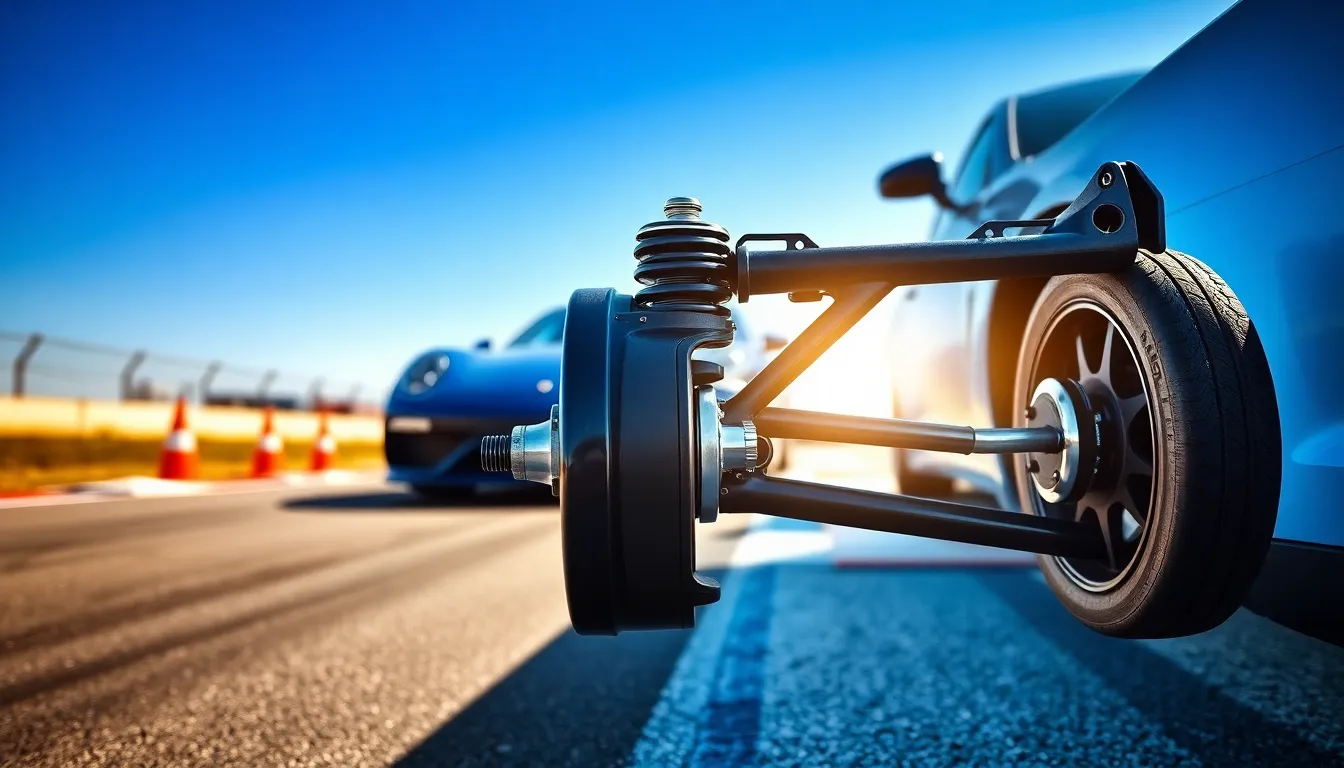
Different vehicle types use varying caster angles to optimize their exact performance characteristics and intended use cases. Understanding these variations helps explain why manufacturers engineer distinct caster settings across vehicle categories.
Sports Cars and Performance Vehicles
Sports cars typically employ higher positive caster angles ranging from 6 to 10 degrees to maximize handling precision and high speed stability. This aggressive caster setting enhances cornering response by increasing negative camber on the outer wheel during turns, which maximizes tire grip and contact patch optimization.
Performance vehicles benefit from the increased self-aligning torque that positive caster generates, providing drivers with enhanced steering feedback and road feel during spirited driving. The steering wheel returns to center more aggressively after cornering maneuvers, creating predictable handling characteristics that performance enthusiasts value.
Racing applications often feature adjustable caster settings that allow teams to fine tune handling balance for exact track conditions. Higher caster angles deliver superior straight line stability at racing speeds, though they require more steering effort that performance drivers readily accept for the enhanced control precision.
Trucks and Heavy-Duty Vehicles
Heavy duty trucks use moderate positive caster angles typically ranging from 3 to 7 degrees to maintain stability while carrying substantial loads or towing trailers. This caster range provides improved directional stability during highway cruising, reducing driver fatigue from constant steering corrections.
Commercial vehicles benefit significantly from positive caster’s self-centering characteristics, especially when handling crosswinds or encountering road crown effects that could otherwise cause steering wander. The increased mechanical trail created by positive caster helps maintain straight line tracking under varying load conditions.
Towing applications particularly benefit from positive caster settings, as the self-aligning torque helps counteract trailer sway and maintains vehicle stability during lane changes or emergency maneuvers. Power steering systems in modern trucks compensate for the increased steering effort that higher caster angles create.
Everyday Passenger Cars
Passenger cars typically feature moderate positive caster angles between 2 to 6 degrees, balancing stability with comfortable steering effort for daily driving scenarios. This range provides adequate straight line stability for highway cruising while maintaining manageable steering forces for parking and low speed maneuvering.
Modern passenger vehicles rely on power steering assistance to offset the increased steering effort that positive caster creates, allowing manufacturers to optimize stability without compromising driver comfort. The self-centering action helps reduce driver fatigue during long distance travel by minimizing constant steering input requirements.
Family vehicles prioritize predictable handling over ultimate performance, making moderate positive caster ideal for creating stable, confidence inspiring driving characteristics that suit the majority of driving situations encountered by typical motorists.
Signs Your Caster Angle Needs Adjustment

Vehicle handling problems often indicate caster angle issues that require immediate attention. Recognizing these symptoms helps us identify when professional alignment service becomes necessary.
Vehicle Pulling represents the most common indicator of caster problems. Our cars pull consistently to one side during straight-line driving when caster angles differ between left and right wheels. Unequal caster creates an imbalance that forces constant steering corrections to maintain direction. Negative caster settings compound this issue by reducing the vehicle’s natural tendency to track straight.
Unstable Handling manifests through persistent wandering and difficulty maintaining course direction. We experience this instability most noticeably at highway speeds where positive caster typically provides maximum benefit. Vehicles with compromised caster angles require continuous steering input to stay centered in the lane. The steering wheel feels loose and unresponsive compared to properly aligned vehicles.
Heavy Load Effects alter caster geometry and create temporary handling changes. Carrying important weight in the rear compartment increases the effective caster angle beyond optimal specifications. This weight distribution shift leads to pronounced instability and unpredictable steering response. We notice these effects particularly during highway driving where elevated speeds amplify the handling irregularities.
Steering Wheel Return Problems indicate insufficient positive caster for proper self-centering action. The steering wheel fails to return to center position after completing turns when caster angles fall below manufacturer specifications. Manual steering correction becomes necessary to straighten the wheel after cornering maneuvers. This symptom typically accompanies other caster-related handling issues and confirms the need for professional adjustment.
Professional Caster Adjustment vs DIY Solutions
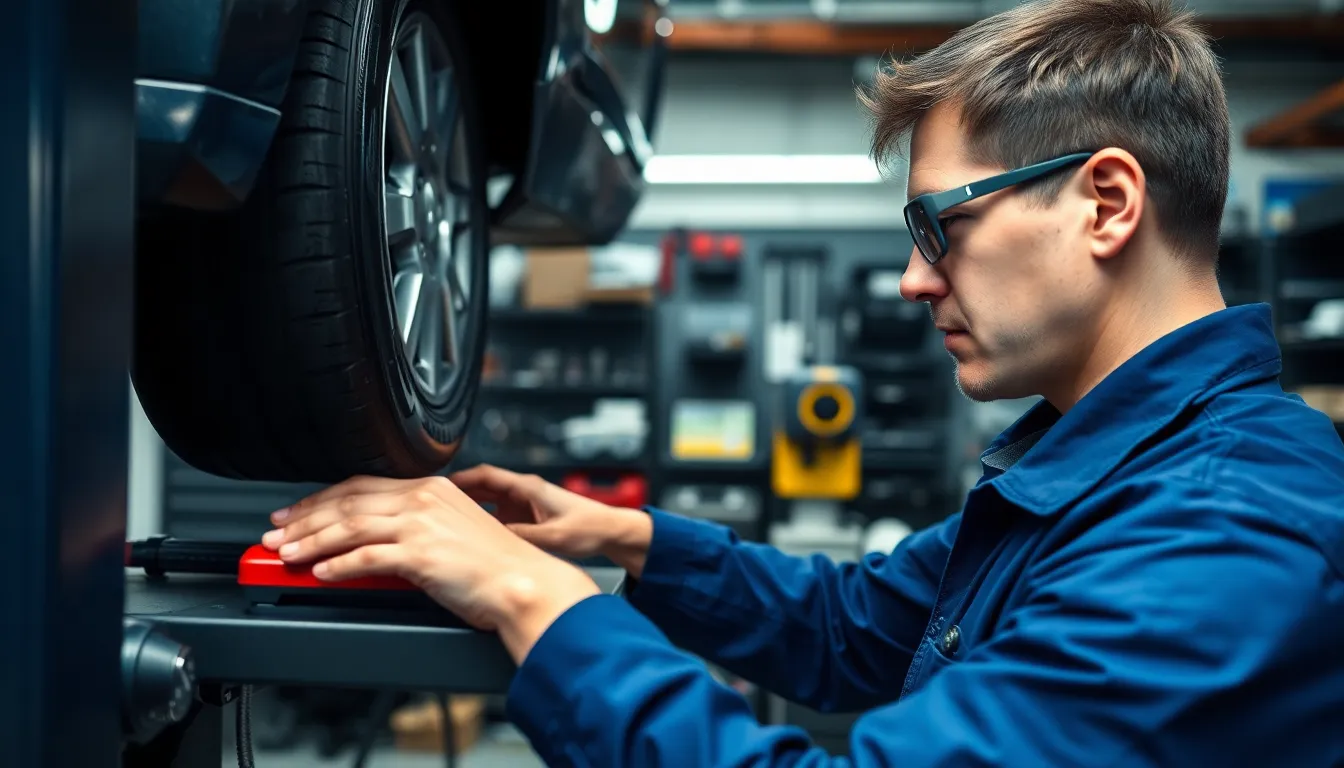
Professional alignment shops possess specialized equipment and expertise that enable precise caster angle measurements and adjustments. Computerized alignment systems calculate exact caster angles within fractions of a degree, ensuring optimal handling characteristics for exact driving conditions. Experienced technicians understand how caster interacts with other suspension geometry elements like camber and toe, creating comprehensive alignment answers.
DIY caster adjustments present important challenges due to equipment limitations and measurement complexity. Standard garage tools can’t accurately measure caster angles, making precise adjustments nearly impossible without professional-grade alignment equipment. Amateur attempts often result in compromised handling performance or unintended steering issues that require professional correction.
Specialized tools required for professional caster adjustment include computerized wheel alignment machines, precision measuring devices, and adjustment-exact hardware. These systems cost thousands of dollars and require regular calibration to maintain accuracy. Aftermarket caster adjustment kits provide limited adjustment ranges compared to professional answers.
Professional services deliver several advantages over DIY approaches when adjusting caster angles:
- Precise measurement accuracy within 0.1-degree tolerances
- Comprehensive suspension analysis examining all alignment angles simultaneously
- Vehicle-exact recommendations based on manufacturer specifications
- Quality assurance through post-adjustment road testing
- Warranty protection covering adjustment work and potential issues
Cost considerations vary significantly between professional and DIY answers. Professional caster adjustments typically range from $100 to $300 depending on vehicle complexity and required modifications. DIY adjustment kits cost between $50 to $200 but may require additional tools and multiple attempts to achieve acceptable results.
Safety implications make professional adjustment the recommended approach for caster modifications. Incorrect caster angles directly impact vehicle stability and steering response, potentially creating dangerous driving conditions. Professional technicians understand these safety relationships and ensure adjustments maintain vehicle stability across all driving scenarios.
Racing applications often require specialized caster adjustment capabilities that exceed standard professional shop equipment. Performance alignment specialists use advanced systems that accommodate extreme caster angles and provide fine-tuning options for competitive driving conditions. These specialized services command premium pricing but deliver race-exact optimization unavailable through conventional alignment shops.
Conclusion
Understanding caster angles transforms how we approach vehicle handling and steering performance. We’ve seen how positive caster delivers the stability and control that modern driving demands while negative caster remains largely obsolete due to its inherent limitations.
The choice between professional alignment services and DIY attempts becomes clear when we consider the precision required for optimal caster settings. We can’t overlook the safety implications and long-term benefits that proper caster adjustment provides.
Whether we’re dealing with daily commuting or performance driving our vehicle’s caster angle directly impacts every mile we drive. Recognizing the signs of caster-related issues and taking prompt action ensures we maintain the handling characteristics our vehicles were designed to deliver.
Frequently Asked Questions
What is caster angle and why is it important?
Caster angle is the steering axis inclination when viewed from the vehicle’s side. It significantly influences your car’s road feel, steering stability, and tire wear. Positive caster tilts backward at the top and enhances stability, while negative caster tilts forward. Understanding caster angle helps address common handling issues like highway wandering and improves overall driving safety and performance.
What’s the difference between positive and negative caster?
Positive caster tilts backward at the top and is common in modern vehicles, providing enhanced stability and self-centering steering. Negative caster tilts forward at the top, offering lighter steering effort but poor directional stability. Positive caster improves highway driving, while negative caster is rarely used today due to safety concerns and unpredictable vehicle wandering.
What are the benefits of positive caster?
Positive caster provides enhanced straight-line stability, superior cornering performance through beneficial camber changes, and effective weight transfer during turns. It creates stronger self-aligning torque for better steering feedback and typically results in more uniform tire wear. These benefits make positive caster the preferred choice for modern vehicles across all categories.
What are the drawbacks of positive caster?
Higher positive caster angles can increase steering effort, making the wheel harder to turn at low speeds. It may also transmit more road shocks through the steering wheel, potentially causing steering shimmy. Additionally, excessive positive caster settings can lead to oversteer conditions, which is why proper adjustment is crucial for optimal performance.
How do different vehicle types use caster angles?
Sports cars use higher positive caster angles (6-10 degrees) for enhanced handling precision. Heavy-duty trucks employ moderate positive caster (3-7 degrees) for stability under load. Everyday passenger cars typically feature 2-6 degrees of positive caster to balance stability with comfortable steering effort. Each vehicle type optimizes caster for its specific performance needs.
What are signs that my caster angle needs adjustment?
Common indicators include your vehicle pulling to one side due to unequal caster angles, unstable handling with persistent wandering, and steering wheel return problems. Heavy loads can also alter caster geometry temporarily. If you experience vague steering feel, difficulty maintaining straight-line driving, or uneven tire wear, professional alignment may be necessary.
Should I adjust caster angle myself or hire a professional?
Professional alignment is strongly recommended. Professional shops have specialized equipment for precise measurements and adjustments, ensuring optimal handling characteristics. DIY adjustments face equipment limitations and measurement complexity, often leading to compromised performance. Incorrect caster angles can create safety hazards, making professional service essential for proper vehicle stability and handling.

